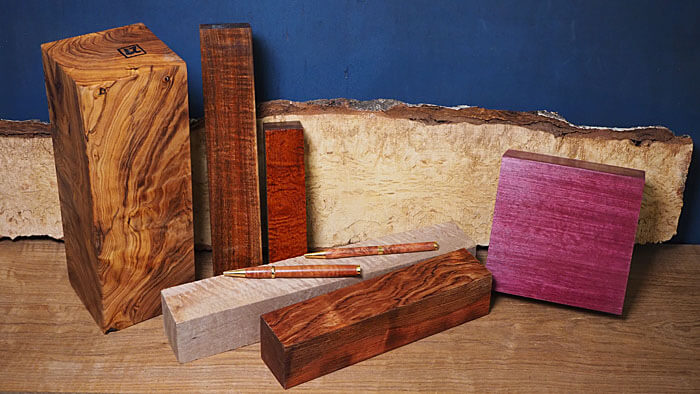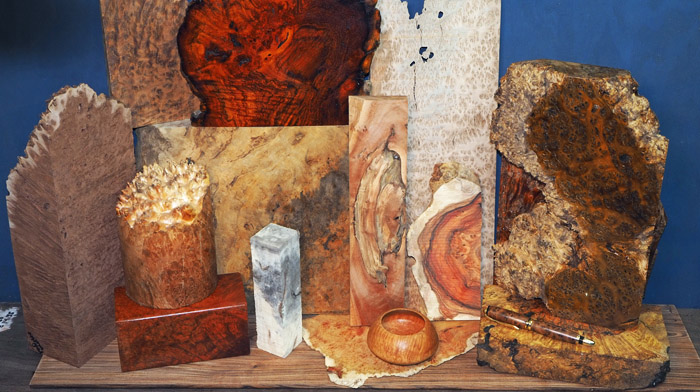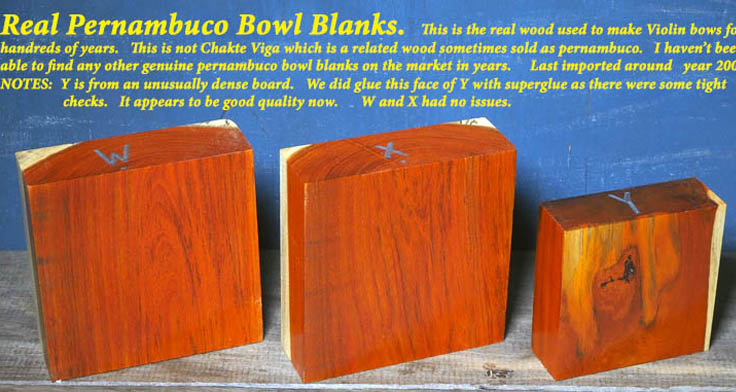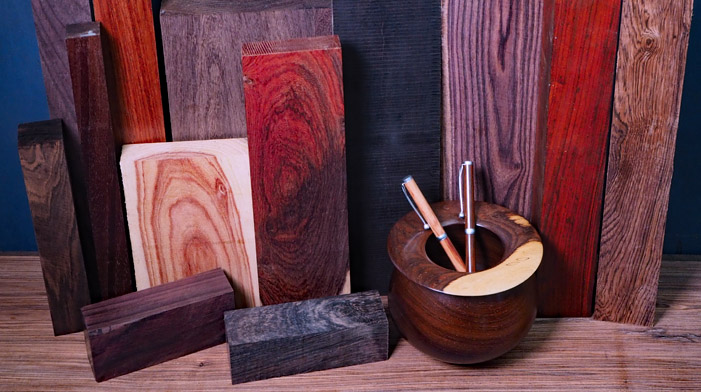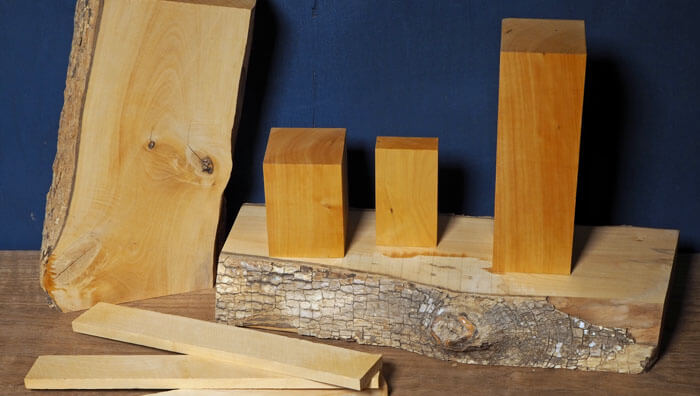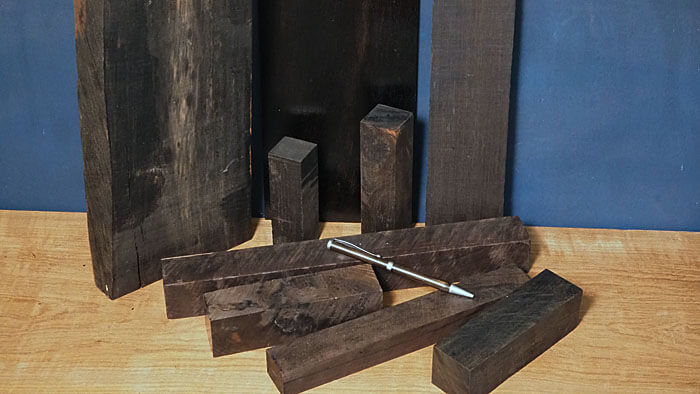Exotic Wood. Rare. Exceptional Quality.
Service and Quality focused on your specific needs
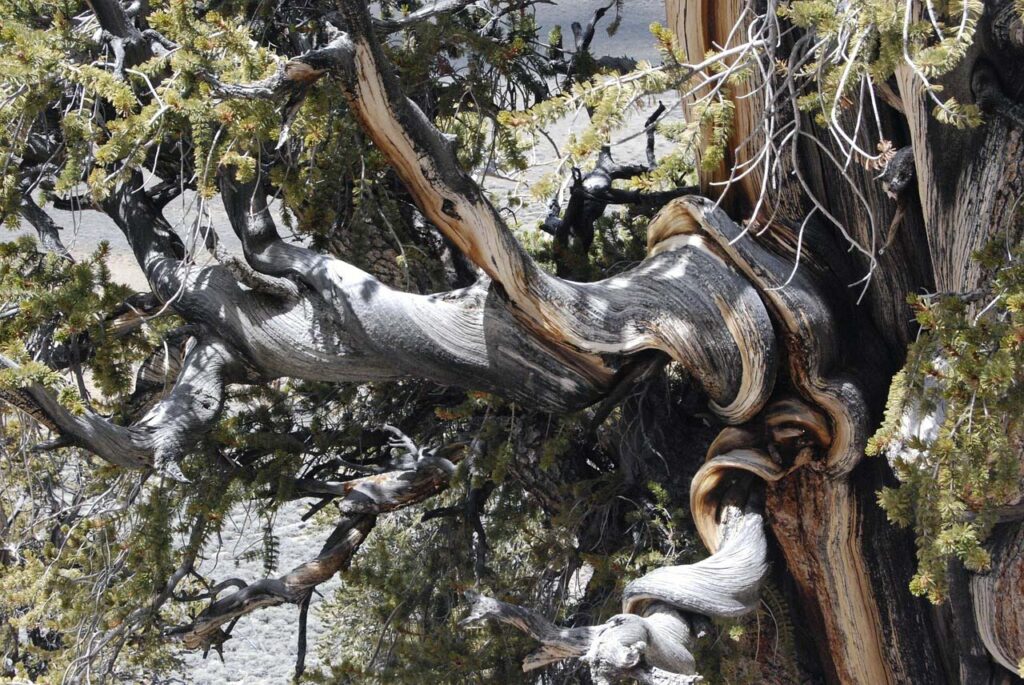
Featured Woods
New Woods (6 products)
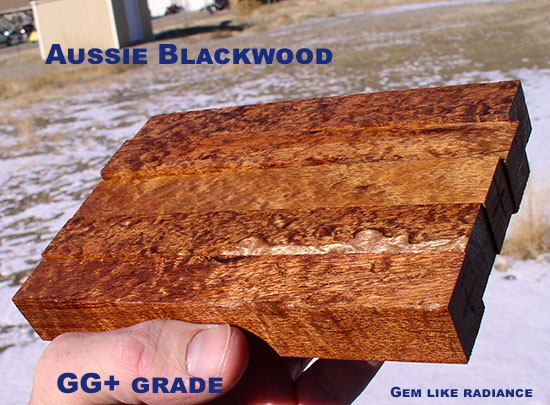
Australian Blackwood GG PLUS pen blanks
Australian Blackwood (acacia melanoxylon) in GG PLUS pen blanks. GG PLUS means there is very good figure on all 4 sides. This level of figure is rare in any wood type. Our pen blanks are always sold dried. Sizes: 3/4 x 3/4 x 5-6 inches long
$11.00
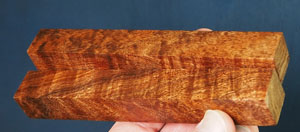
Australian Blackwood GG pen blanks
Australian Blackwood (acacia melanoxylon) pen blanks in GG. Gallery grade means there are at least two very figured sides, or sometimes even 3-4 sides that are figured. Close relative of Hawaiian Koa and very hard to tell apart sometimes. But less expensive, and more importantly, still available unlike Koa which is nearly gone in high figured pieces. Sizes are 3/4 x 3/4 x 5-6 inches long. Pen blanks are always sold dried.
$8.00
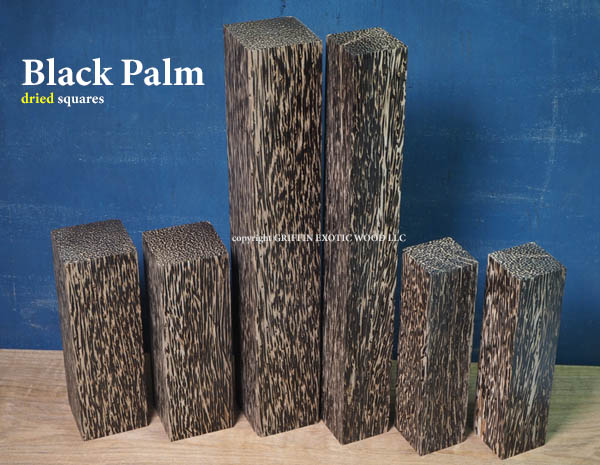
Black Palm Squares (ALL DRIED)
Black Palm is one of those unique woods that belong in the list of exotics. It is easy to sand and has some characteristics different from other woods. You’ll find the black part is less absorbent than the white/light part. This means that the light part will darken somewhat if you don’t use a sanding sealer to prevent it from absorbing whatever finish you use. Both appearances are good, but for more contrast use a sanding sealer.
$5.00 – $17.50
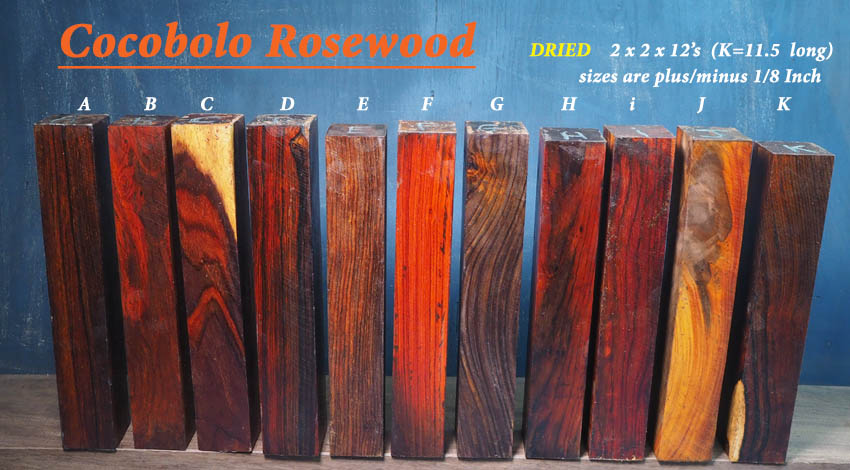
Cocobolo A to K
Dried Cocobolo 2 x 2 x 12’s (K is 11.5 inches long). Really nice genuine rosewood, we are lucky to still be able to get this stuff. Most rosewoods are basically off the market, but this is still coming in small amounts, through a permit program.
$31.50 – $33.00
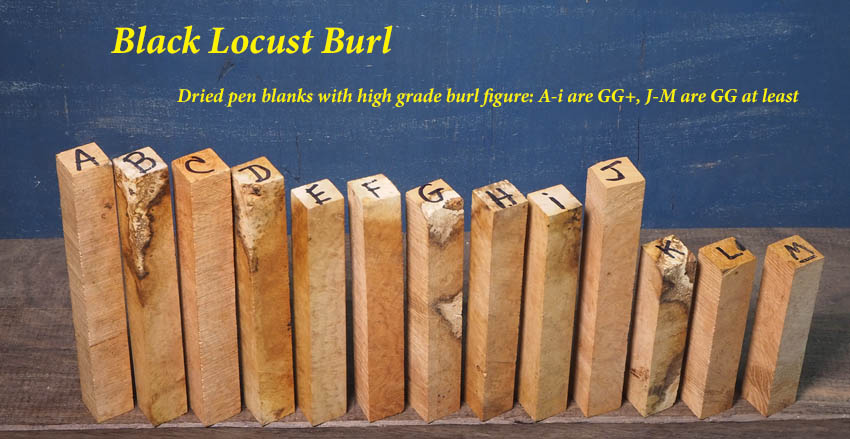
Black Locust Burl pen blanks
Black Locust is a wood that grows in North America and is so durable it is used for fence posts with an expected life of 40 years in wet ground. A long time ago I lived in rainy, humid Southern Maryland and the best fence posts were locust. Pressure treated posts do not last as long.
These are really high quality burl. GG+ means there is very high figure visible on all 4 sides, rare. GG means there is high figure on at least 2 parallel sides, but these have figure on 4 sides. It is hard to get this burl with a burl figure this fine and high grade, making them really perfect for pen blanks. Some finishes make them look darker, especially those that soak into the surface.
$3.50 – $8.20
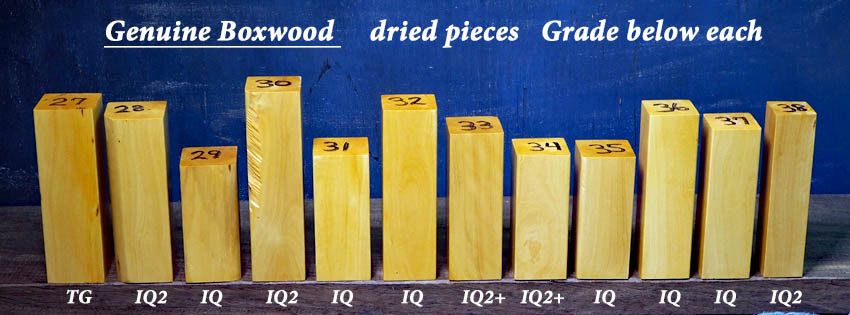
Boxwood 27 to 38
Genuine Boxwood, dried pieces. Note that the grade is shown under each piece. These are fine grained pieces.
$11.50 – $32.00
Why Griffin Exotic Wood?
We believe in easy access to things that are good for our mind, body and spirit. With a clever offering, superb support and a secure checkout you’re in good hands.

Only Quality Items
We do not sell seconds or other substandard pieces without labeling them as such. Our High Quality is the standard for exotic blanks.

Satisfaction Guarantee
We did not issue a single refund last year, which highlights the meticulous manner in which we maintain quality and assure safe delivery.

Carefuly Selected Woods
We spend a great deal of time making sure that the wood we offer is legal, of high quality and tailored to our customer’s needs.
Unsolicited Testimonials from our customers.
Don’t take our word for it, see what our customers say…
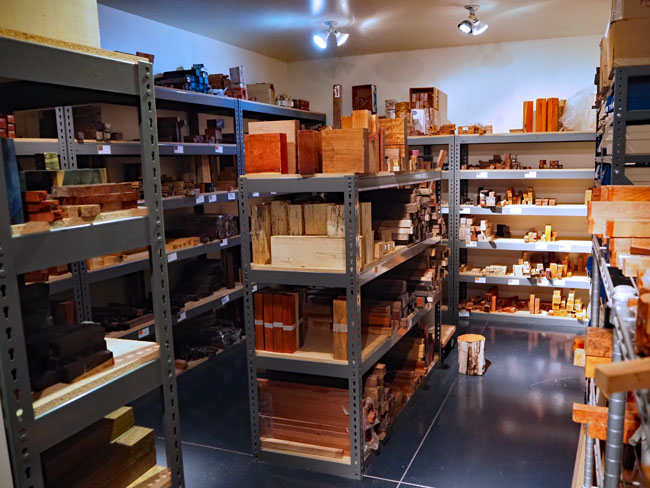
About the Artist
James first became interested in woodworking as a child watching his father turn some wood on a benchtop lathe. James’ father was an electrial engineer who worked at a US Navy base in Maryland as part of a group testing new aircraft. When his father was not working, he enjoyed making furniture and building additions to the house or outbuildings. James could see the versatile uses of wood and became more interested in the hardwoods and the way you could make create details in them on the lathe. That appealed to James’ artistic interests, and he always had woodworking as a creative outlet.
Frequently Asked Questions
The numbers are always in inches, unless specifically stated otherwise.
The short answer: is that every piece is different as to how dry it is. If you need more information ask us about specific pieces and we will tell you our best guess.
The Long, complicated answer: Most woodturners turn wood that is anywhere from green (completely wet) to totally dry. If you have specific needs, let us know before ordering. Be aware that the term kiln-dried is being used by many suppliers now to mean anything that has been put in a kiln no matter how dry the wood is when they take it out. They may put it in the kiln at 30% moisture and take it out at 25% moisture and call it kiln-dried. We consider wood at 25% to be green (wet) wood and do not mark it as kiln-dried. Others do the same with air drying, and as long as they have put the wood in the air for a week or more, they sell it as air dried. In order to avoid the confusion, we sell all wood as partially air-dried (PAD) unless it is specifically marked otherwise. If it is marked kiln-dried, we believe the moisture level is below 12% (or we have indicated approximate percentage) but cannot guarantee the percentage because the only truly accurate way to find out moisture level is to dry the wood in the microwave and weigh the difference between the dry weight and the wet weight. This destroys the piece of wood, so it is not a viable alternative. Moisture meters give one a general idea of moisture level but the measurements given are only accurate in the area between two pins at the depth they are pushed into the wood (leaving holes). Even moisture meter readings are very inaccurate if you do not know the real density of the wood being measured (and wood densities within the same species vary a great deal). And finally dry in your area, may not be dry in my area (since average humidity levels vary and determine the point at which moisture stops coming out of a piece of wood.) 15% moisture may be fairly stable in wet areas of Vermont, but it takes about 5% to be stable here in the desert of Colorado.
Bottom line: To find out if you have reached a point of equilibrium in your environment, weigh the piece of wood with a gram scale and see when no more moisture is coming out (by virtue of seeing when the weight of the piece stops changing over weeks of measurements). The fact is, no one can guarantee a piece of wood is dry where you live unless it was dried where you live. See drying suggestions at the bottom of this page.
In a word, no. All sizes are in inches unless noted otherwise. Allow for the size of your finished piece to be up to 1/4″ smaller than the listed size. Our company standard is that the wood must be not more than 1/8″ undersized (rough cut) (1/4″ for bulk buys), something most suppliers now adhere to (unless they are allowing 1/4″ under, which many are). The length may be up to a maximum of 1/4″ undersized, but rarely.
The long answer: Most of the wood is cut overseas by machinery that makes rough cuts and personnel that do not understand how to make precison cuts. It is virtually impossible to change this, and it is cheaper to just order the next largest size if necessary. For the most part (there are a few exceptions where people are highly skilled) people cutting exotic wood overseas do not care about this issue and refuse to change their practices. The exotic wood market is so huge worldwide, that these people would just sell somewhere else if we demanded higher quality. Currently there is no leverage to change this we are aware of. Buying logs and cutting in this country, would on average result in a price increase of 2 to 3 times what you now pay for wood. This is because labor and shipping are too expensive in developed countries and from 40% to 95% of the log on average is waste (cannot make a turning blank, including pens) .
In a perfect world yes, in the real world no.
The long answer: If you and I stopped buying exotic woods, they would become no more valuable than any other tree. Generally that means uses like firewood, or just complete devastation through slash and burn agriculture would be more lucrative for the locals. Teaching locals that trees have monetary value (only because you and I buy them) helps them become conservationists, or at a minimum keeps certain trees on an international watch list which can block export of certain species to try to prevent wholesale destruction. This is probably the only reason certain trees such as Brazilian Rosewood are not extinct today. Without a financial value, there is little or no motivation to protect trees. If you are concerned about the environment (as we are), we invite you to plant a tree where you live, and are able to watch over it. Or give to organizations such as the African Blackwood Conservation Project, which plants trees back in the native habitat.
To visit the Blackwood Conservation Website: click here
There is no short simple answer for exotic wood so we will try to explain.
The Scientific way for greatest accuracy: To find out how dry a piece of wood is, you have to measure the weight in grams, figure the exact volume of the piece to test, and then microwave it until there is no more moisture in it. You then reweigh the wood and calculate the difference in weight between wet and dry and figure the percentage of moisture in the wood. The problem with this method is that the piece of wood will be destroyed in order to test it.
The more practical way is to get a pinless moisture meter which can adjust to the approximate specific gravity of the wood. You enter in the specific gravity, hold it up to the wood and press the button to get the percentage of moisture in the wood. This is the easiest and most practical way, but a meter that is accurate currently costs about $400.00 (Note: meters that do not adjust for specific gravity are worthless for exotic woods over .45 specific gravity–which is most of them and that kind of meter should not be used for wood harder then fir (like 2×4’s) .)
The least expensive accurate way to measure dryness is to weigh it on a very accurate scale and wait until the weight of the piece stops dropping. That means the piece has reached its equalibrium moisture content. Equalibrium moisture content means that the piece has gotten as dry as it can given the humidity and temperature in its current environment. In most areas, the driest wood can get is 8 to 12% moisture. In some areas such as Vermont or Seattle Washington, the moisture may not go below 16%. In severely dry areas such as the deserts of Arizona, California, and Nevada, the moisture may go too low for the wood to tolerate. It should be sealed up to prevent it going lower than 6%. (Otherwise it might crack even if the drying process has been gentle).
Drying methods:
(No drying method can be guaranteed to work every time to produce a straight, unwarped and uncracked piece of wood. This is because internal stresses in some woods may lead to twisting or cracking no matter what method is used). Use these methods at your own risk and with your best judgement as to which is best. We all lose some wood to drying cracks no matter what we do.
The paper bag method:
Turn or cut the wood as thin as possible (but thicker than the final size) and place it in a paper bag (or non glossy newspaper–2-3 layers with all gaps covered in tape) in a humid area like a basement or other area with humidity over 55% and temperature below 80 degrees (all the time) . (For Gaboon Ebony, you need more like 70% humidity and very cool temp. like under 75 degrees). If you are cutting straight flat pieces (as opposed to bowls made on the lathe) they need to be stickered and stacked. A sticker is a piece of wood (like a popsicle stick which works well) that is dry and evenly cut and is placed between layers of flat pieces (about 1.5″ apart, especially if the wood is delicate) like a sandwich with one layer resting on the one below it. The top is then covered with some flat object (such as 3/4″ plywood, big book, etc.) and then that is covered with something heavy. You could use any heavy object which will stay in place. You can also use heavy rubber bands to hold everything in place when you are inspecting inside the bag or the newspaper. Then put the bag over everything and wait until dry. Remember: The end grain of wood must be sealed and left sealed completely with wax, paint, varnish, polyurethane, etc. or the piece will crack from loosing moisture too quickly. Do not place near a fan or heat source or the drying may occur too quickly unless the humidity is always above 70% at all times.
Note: Don’t use the above method for snakewood over 5/8″ thick , or black and white ebony over 1/2″ thick or they will crack.
The plastic bag method:
Prepare the wood as discussed above under the paper bag method. This method is best for extremely green (wet) or difficult to dry woods. You place your wood in a completely sealed plastic bag and simply turn the bag inside out every few days. This way the condensation that has built up inside the bag is removed and the wood is slowly dried. This is a great method for slow drying difficult woods since you can use it regardless of the humidity where you live and the wood can’t dry too fast.
The finish it wet method:
This is the fastest but also most risky method of drying and really only works for lathe turned items. You make your piece and finish it with oil (soaking a lot in) or wax or the product called Shellawax. We have tried this (Shellawax) with black and white ebony and even though it is one of the most difficult pieces to dry it worked. Turn the piece as thin as possible, fill any checks with superglue and sand and finish all in one sitting. This is the only easy method we know of for finishing snakewood too.
A final note that applies to all three methods above: We use thin superglue to fill any checks that might form while they are still very small (like hairline width). That way you can stop some of the inevitable checks that will lead to big cracks if left untreated. Inspect often for these as they can begin to form from one minute to the next. Also, make sure the superglue is dry before putting the item back in the bag (we use activator to dry it fast).
Can’t do these methods? You might want to consider buying dry wood. It is very limiting in terms of the types you can get and the sizes, but it is the only way around doing some method above unless you desire to construct a piece (such as a burl) which would form natural cracks as part of the piece. Many thicker or unusual woods simply can’t be dried without cracking by commercial methods which is why they are only available undried, or in rare cases we have pieces that have dried 5+ years. One last possibility is to have the wood resin impregnated, let us know if you want us to recommend someone to do that for you (it is quite expensive and usually doubles the final cost of the piece or more).
The answer is too difficult to calculate because there are too many complicated variables. We always have some wood drying for a rainy day so that there is always some to use for our projects. What if you don’t know what to do in your particular situation with a piece of wood purchased from Griffin Exotic Wood: Email us with specifics and we will give our best guess as to the most successful method. (We can’t guess drying time exactly though)
Send emails to : exoticwoodman@msn.com
It is the part of the wood that faces the top and the bottom of the tree. The tree uses it as a sap circulation system and this is why water comes in and out much faster on the endgrain (like tiny drinking straws from the bottom to the top of the tree). For this reason, the endgrain is always blocked with wax or paint during drying. If the water comes out of the wood too quickly, it can’t adjust to the change in internal stress and it breaks (cracks). If you have a firewood pile look at the ends of all the dried pieces—full of cracks from drying very rapidly.
The truth is, you can’t. However, you can slow it down a great deal. Some woods, like african padauk turn brown if you don’t do something to stop it. All woods will turn a duller color or a different color if left untreated. We recommend using a wipe-on (or brush on if it exists) polyurethane that specifically says it blocks UV light. This can then be used as the final finish or you can put another finish (except oil) over it.
We are located in the desert of Western Colorado, within site of some of the 14,000 ft. mountains in the Rockies. For details on returns, and the different return rules for Bulk Buys, check the return policy on the “order info” page. There is a link to it at the bottom of almost every page on the left, and also HERE

